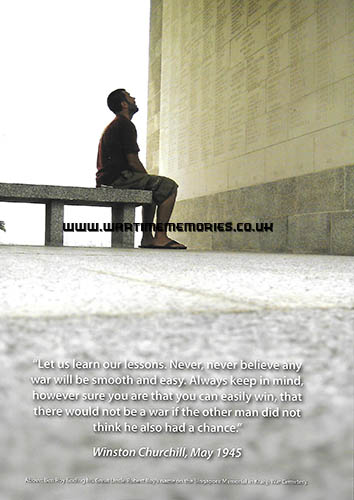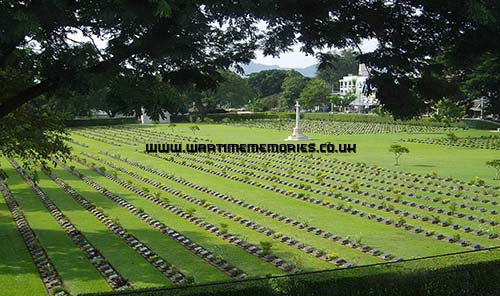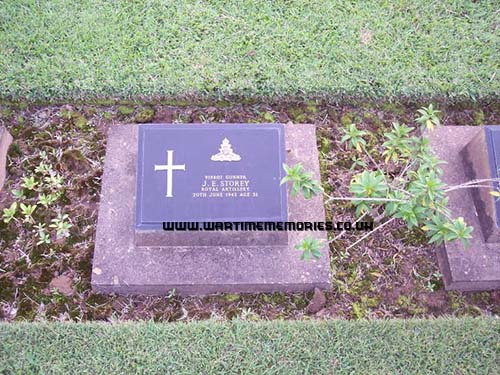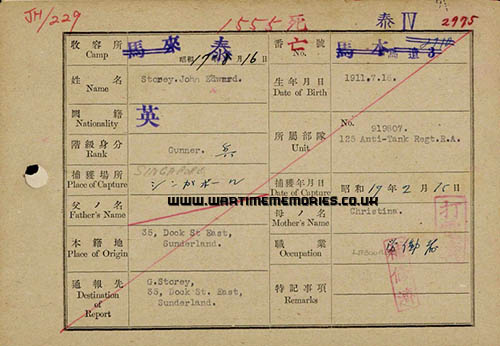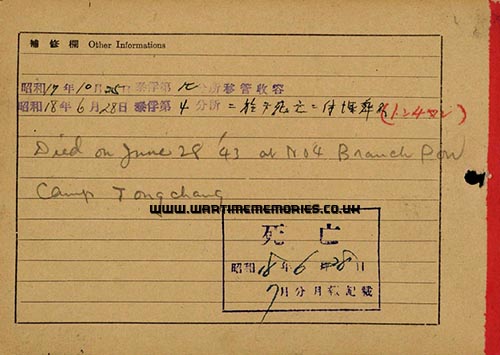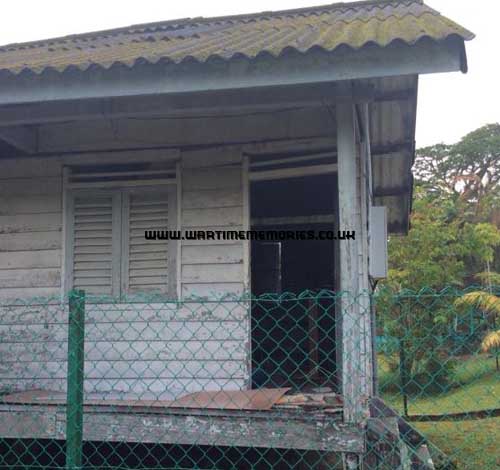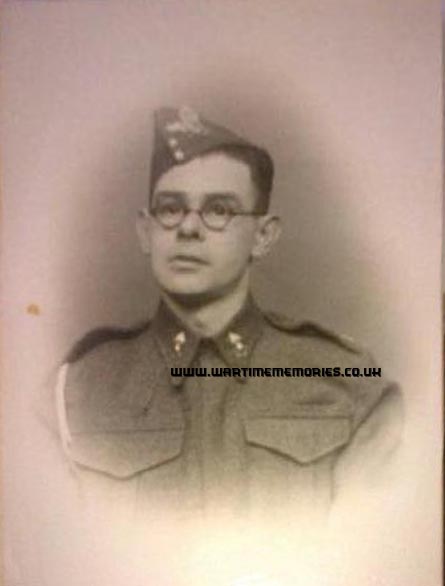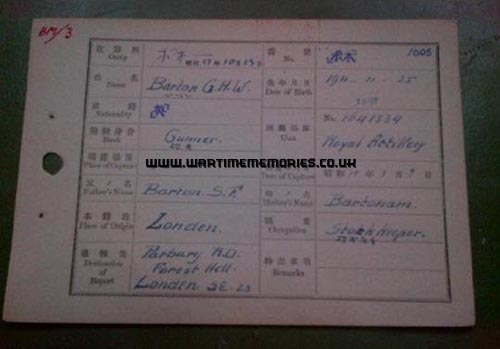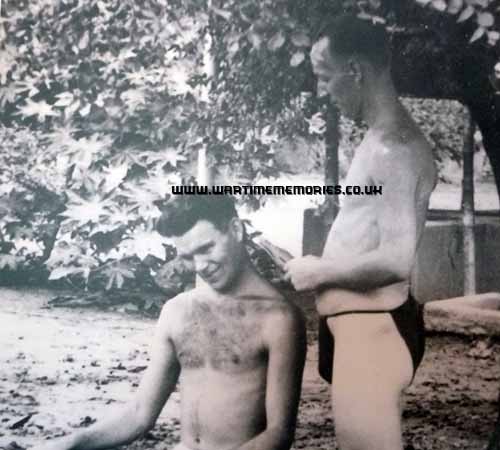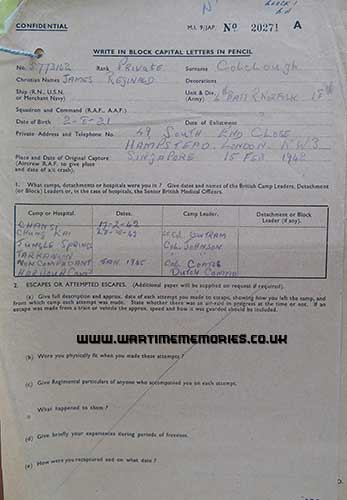|
|
|
|
|
The Wartime Memories Project is the original WW1 and WW2 commemoration website.
Announcements
- The Wartime Memories Project has been running for 24 years. If you would like to support us, a donation, no matter how small, would be much appreciated, annually we need to raise enough funds to pay for our web hosting and admin or this site will vanish from the web.
- 18th April 2024 - Please note we currently have a huge backlog of submitted material, our volunteers are working through this as quickly as possible and all names, stories and photos will be added to the site. If you have already submitted a story to the site and your UID reference number is higher than 263925 your information is still in the queue, please do not resubmit, we are working through them as quickly as possible.
- Looking for help with Family History Research?
Please read our Family History FAQ's
- The free to access section of The Wartime Memories Project website is run by volunteers and funded by donations from our visitors. If the information here has been helpful or you have enjoyed reaching the stories please conside making a donation, no matter how small, would be much appreciated, annually we need to raise enough funds to pay for our web hosting or this site will vanish from the web.
If you enjoy this site
please consider making a donation.
Want to find out more about your relative's service? Want to know what life was like during the War? Our
Library contains an ever growing number diary entries, personal letters and other documents, most transcribed into plain text. |
|
We are now on Facebook. Like this page to receive our updates.
If you have a general question please post it on our Facebook page.
Wanted: Digital copies of Group photographs, Scrapbooks, Autograph books, photo albums, newspaper clippings, letters, postcards and ephemera relating to WW2. We would like to obtain digital copies of any documents or photographs relating to WW2 you may have at home. If you have any unwanted
photographs, documents or items from the First or Second World War, please do not destroy them.
The Wartime Memories Project will give them a good home and ensure that they are used for educational purposes. Please get in touch for the postal address, do not sent them to our PO Box as packages are not accepted.
World War 1 One ww1 wwII second 1939 1945 battalion
Did you know? We also have a section on The Great War. and a
Timecapsule to preserve stories from other conflicts for future generations.
|
|
Want to know more about Changi Prison Prisoner of War Camp? There are:2 items tagged Changi Prison Prisoner of War Camp available in our Library There are:2 items tagged Changi Prison Prisoner of War Camp available in our Library 
These include information on officers, regimental histories, letters, diary entries, personal accounts and information about actions during the Second World War. |
|
Pte. George Sidney Tubb 5th Btn. Suffolk Regiment My granddad George Tubb was in Singapore in 1942 when the British Army surrendered to the Japanese. He was imprisoned first in Changi, then in Chungkai, and he worked on the Burma Death Railroad.
He never spoke about his time in captivity, but he was a very happy man. It wasn't until he died in 1999 that my aunt found a lot of his momentoes and maps that he kept. He lost a lot of his comrades while in POW camps and was lucky to survive.
|
Cpl. Allan Howard "Wimpey" Bye C Company 2/19th Battalion Allan Bye, know as Wimpey fought in the Malayan and Singapore Campaigns. As a POW he was interned in Changi, Great World POW Camp, Thai Burma Railway, Nagasaki Ship Yards and Nakama coal mines.
He died in January 2000.
|
Pte. Leslie Shilcock Sherwood Foresters Leslie Shilcock was taken prisoner by the Japanese at the fall of Singapore.
|
Gnr. Leslie Nowell 5th Searchlight Regiment Royal Artillery (d.12th Sep 1944) 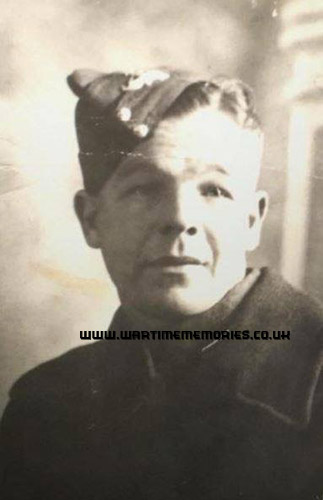 On 13th May 1915, Leslie was born at Fishgate, York, Yorkshire, the son of George Ernest Nowell and Eliza Nowell. He left school as a teenager and was employed by York Council, where he worked as a general labourer and road sweeper. In 1936, Leslie married Eleanor Atkinson. They had two children and lived at 21 Temple Avenue, Tang Hall Estate, York.
In 1939, after the outbreak of the war, Leslie left his wife and two children to go into the Army. He was assigned to the 5th Searchlight Regiment, Royal Artillery, and was posted to Singapore. There, he was stationed at Changi Barracks.
On 15th February 1942, Leslie became a prisoner of war when Singapore was captured by the Japanese; his POW number was M-903. He, his comrades, and many other prisoners were kept at Changi Barracks, which the Japanese converted to use as a prison. He remained there until early April.
On 4 April 1942, Leslie was one of the first thousand prisoners to leave Singapore and be transported on the ship Nissyo Maru to Saigon, where he and the other prisoners were made to work at the docks.
On 22 June 1942, he was transferred to Thailand where, along with 700 other men, he was put to work building a railway. On the way, they were interned briefly at Tarsao Camp, and then spent a couple of weeks building the Kinsayok Camp.
On 23rd June 1944, Leslie and 500 other prisoners were taken from Tha Muang, Thailand to Singapore, where they awaited final transfer to confinement in Japan. On 4 September, he and 900 other prisoners boarded the Kachidoki Maru, which joined convoy Hi-72 en route to Japan. The convoy also included the Rakuyo Maru, which held 1,317 Australian and British prisoners. The two transport ships were not marked as carrying prisoners of war.
On 12th of September, the convoy was attacked by American submarines. At 22.40 hours, the USS Pampanito fired three torpedoes at the Kachidoki Maru. The ship was holed, flooded quickly, and sank. The only survivors were those who were able to jump overboard. Along with more than 400 other brave men who were aboard as prisoners, Leslie lost his life that night.
Sadly, while Leslie was a prisoner of war, his wife Eleanor contracted tuberculosis and died on 28 January 1944, at age 24. She left behind their two young children, Leslie age 8 yrs and Christine 6 yrs, not knowing that what lay ahead for them was to be placed in an orphanage, or knowing the fate of her husband.
Always remembered and never forgotten.
|
Pte. Thomas Snowball 1st Btn Durham Light Infantry Thomas Snowball was with his unit covering the retreat through Burma, he was lost in the jungle and found by Nuns at a Convent. He was with an officer called Vere Wheeler.
He weighed 6 stone when found, but was nursed back to health and re-joined the army in Darjeeling.
|
Pte. Gordon Stuart Fleming No. 2 Sect. Armoured Cars HQ 1st Perak Btn. Gordon Fleming was a mining engineer with Anglo Oriental Tin Company in Bidor, Malaya when he enlisted.
He was captured by the Japanese with his brother-in-law William Watkins and they were both transferred to Changi.
He was relocated to Malai Camps, then No.4 camp in Thailand.
Gordon worked on the Thai Burma Railroad.
He survived the war and returned to Australia.
|
Gnr. Francis Kelso 155th Field Regiment Royal Artillery Francis Kelso was captured during the fall of Singapore by the Japanese Imperial Army. He was interned at Changi initially before being moved to Kinksaeki where he worked for years in the copper mines there. Eventually, he was freed by American troops and taken to America for rehabilitation before being returned to Scotland where he was piped down the streets of Wishaw on his return home.
|
Sig. Robert Roy 28 Wing Section Royal Signals (d.30th August 1945) Robert Roy was my uncle. But, sadly I never met him and my Dad never spoke of him much. Whilst trying to research my Dad's service history in the Royal Marines I decided to look for Robert and was very pleased to find his name on the Kranji War Memorial list. My son visited Singapore a few years ago and took a very moving picture whilst he sat looking at the monument.
In March this year I am going to Singapore to see the memorial and also to Burma where I believe Robert served and was captured by the Japanese and ended up dying in Changi Prison.
|
Dvr. Albert "Snowy" Wattam 20 Line Maintenance Section Royal Signals My grandfather Albert Wattam had his second stint in the Army during WW2, enlisting in the Royal Signals on the 12th of September 1940. He was posted to 3rd Indian Corps of Signals, as part of 11 Division.
He arrived in Singapore as part of 20 Line Maintenance on 5th of December 1941. He was taken prisoner at the Fall of Singapore and was in Changi Camp from 15th of February 1942 until 30th of March 1945, his POW No was I6430.
There is then a gap till 13th of May 1945 where he is recorded as being in Adam Road Camp, with a new POW No 11095.
He started repatriation 2nd of November 1945 arriving back in UK sometime in March 1946.
Any further information gratefully received.
|
Gnr. John Edward Storey 125th Anti Tank Regiment Royal Artillery (d.20th Jun 1943) My dad and his brother both served in Burma but with different units.
My dad was in the Green Howards and he survived the war. His, John Storey brother was in the 125th Anti Tank Regiment and I think he joined when the unit was a Territorial unit based in Seaburn, Dyklands Road Sunderland. I know before his unit actually got into any active service they were on civil defense duties firstly in Glasgow then Liverpool.
After training in Scotland the unit set sail and arrived in Singapore in 1942. The ship was bombed but many of the unit made it ashore to reform but without much ammunition they were ordered to surrender by the Japanese.
They were then marched to Changhi and spent 3 and half years in captivity. Many died and my uncle died on the Burma-Siam railway.
He died of dysentery and is now buried in Kanchanaburi War Cemetery in Thailand.
|
Gnr. Stanley Charles Crisp 50th Coast Observation Detachment Royal Artillery (d.8th Mar 1942) My Great-Uncle Stanley Charles Crisp was a gunner of the 50th Coast Observation Detachment R.A. who died in Singapore a month after its fall in WW2.
The fall of Singapore was on the 15th of February 1942, it seems he was taken to the Changi prison camp where he died on the 8th of March, just one month later and has a marked grave in the Singapore Cemetery.
Changi was one of the more notorious Japanese prisoner of war camps. So I assume he died of disease probably, however this is where I need anyone's help. Records state that he was part of 50 coast obs. Det. R.A. which I believe might be 50 Coast Observer, Detachment, Royal Artillery. He was aged 33.
If anyone can help piece together his story of what his unit was, what they were doing, and what could have happened? Perhaps if there is any photos or anything please help. Thank you
|
Bmbdr. Walter Usher 122nd Field Regiment Royal Artillery Walter Usher served with the Lincolnshire Regiment and 122nd Field Regiment, RA.
He was imprisoned at Changi on the 15th of February 1942 and left Changi, Singapore, on 16th of August 1942, sailing two days later on the Fukai Maru, this was a shipment always designed as a propaganda sailing. It was known as Japan party B.
The Commander of the Korean Army, General Seishiro Itagaki, requested 2,000 white prisoners of war to be sent to Korea. The purpose of this draft of prisoners was to "stamp out respect and admiration by the Korean people for Britain and America", while at the same time "establishing in them a strong faith" in a Japanese victory in the war.
The prisoners on the Fukai Maru were split across two camps. He went onto Keijo Camp.
|
Gnr. George William Barton Royal Artillery George Barton was my grandfather. I have all the papers from the National Archives including his capture card
I have letters he sent home and a note showing where he was captured and the camps he was in, Changi, Priok and Kuching.
I went to Kuching and found two remaining POW huts still there.
|
Pte. James Reginald Colclough 4th Battalion Norfolk Regiment James was in the following camps:
- 1. Changi - the POW Camp.
- 2. Ban Pong - first transit camp on the Railway.
- 3. Chungkai - Group 2 main base camp and Hospital
- 4. Jungle Springs - possibly Tonchan Springs
- 5. Tha Khannun
- 6. Nakhon Pathom - main Hospital in Thailand.
- 7. Harbour Camp - Bangkok Docks
POW Numbers
- 4257 - his number in Singapore.
- 3890 - his original number in Thailand.
- 4697 - a new number given to him in Thailand.
He left Changi, Singapore on 31/10/42. This would have been as part of R Party (18th Div) under the command of Lt-Col. A.A.Johnson, 4th Suffolk Regt.
He arrived at the Work Group 2 Camp on 7/11/42, which would have been via Ban Pong.
He was transferred to the second annex of the POW Camp in Thailand.
He was handed over to the Allied Powers in Bangkok, Lt-Col.C.A.McEachern, Royal Australian Artillery, he was the Australian Senior Officer on the Thai-Burma Railway.
|
Pte. George Sidney Tubb 5th Btn. Suffolk Regiment My granddad George Tubb was in Singapore in 1942 when the British Army surrendered to the Japanese. He was imprisoned first in Changi, then in Chungkai, and he worked on the Burma Death Railroad.
He never spoke about his time in captivity, but he was a very happy man. It wasn't until he died in 1999 that my aunt found a lot of his momentoes and maps that he kept. He lost a lot of his comrades while in POW camps and was lucky to survive.
|
Cpl. Allan Howard "Wimpey" Bye C Company 2/19th Battalion Allan Bye, know as Wimpey fought in the Malayan and Singapore Campaigns. As a POW he was interned in Changi, Great World POW Camp, Thai Burma Railway, Nagasaki Ship Yards and Nakama coal mines.
He died in January 2000.
|
Pte. Leslie Shilcock Sherwood Foresters Leslie Shilcock was taken prisoner by the Japanese at the fall of Singapore.
|
Gnr. Leslie Nowell 5th Searchlight Regiment Royal Artillery (d.12th Sep 1944)  On 13th May 1915, Leslie was born at Fishgate, York, Yorkshire, the son of George Ernest Nowell and Eliza Nowell. He left school as a teenager and was employed by York Council, where he worked as a general labourer and road sweeper. In 1936, Leslie married Eleanor Atkinson. They had two children and lived at 21 Temple Avenue, Tang Hall Estate, York.
In 1939, after the outbreak of the war, Leslie left his wife and two children to go into the Army. He was assigned to the 5th Searchlight Regiment, Royal Artillery, and was posted to Singapore. There, he was stationed at Changi Barracks.
On 15th February 1942, Leslie became a prisoner of war when Singapore was captured by the Japanese; his POW number was M-903. He, his comrades, and many other prisoners were kept at Changi Barracks, which the Japanese converted to use as a prison. He remained there until early April.
On 4 April 1942, Leslie was one of the first thousand prisoners to leave Singapore and be transported on the ship Nissyo Maru to Saigon, where he and the other prisoners were made to work at the docks.
On 22 June 1942, he was transferred to Thailand where, along with 700 other men, he was put to work building a railway. On the way, they were interned briefly at Tarsao Camp, and then spent a couple of weeks building the Kinsayok Camp.
On 23rd June 1944, Leslie and 500 other prisoners were taken from Tha Muang, Thailand to Singapore, where they awaited final transfer to confinement in Japan. On 4 September, he and 900 other prisoners boarded the Kachidoki Maru, which joined convoy Hi-72 en route to Japan. The convoy also included the Rakuyo Maru, which held 1,317 Australian and British prisoners. The two transport ships were not marked as carrying prisoners of war.
On 12th of September, the convoy was attacked by American submarines. At 22.40 hours, the USS Pampanito fired three torpedoes at the Kachidoki Maru. The ship was holed, flooded quickly, and sank. The only survivors were those who were able to jump overboard. Along with more than 400 other brave men who were aboard as prisoners, Leslie lost his life that night.
Sadly, while Leslie was a prisoner of war, his wife Eleanor contracted tuberculosis and died on 28 January 1944, at age 24. She left behind their two young children, Leslie age 8 yrs and Christine 6 yrs, not knowing that what lay ahead for them was to be placed in an orphanage, or knowing the fate of her husband.
Always remembered and never forgotten.
|
Pte. Thomas Snowball 1st Btn Durham Light Infantry Thomas Snowball was with his unit covering the retreat through Burma, he was lost in the jungle and found by Nuns at a Convent. He was with an officer called Vere Wheeler.
He weighed 6 stone when found, but was nursed back to health and re-joined the army in Darjeeling.
|
Pte. Gordon Stuart Fleming No. 2 Sect. Armoured Cars HQ 1st Perak Btn. Gordon Fleming was a mining engineer with Anglo Oriental Tin Company in Bidor, Malaya when he enlisted.
He was captured by the Japanese with his brother-in-law William Watkins and they were both transferred to Changi.
He was relocated to Malai Camps, then No.4 camp in Thailand.
Gordon worked on the Thai Burma Railroad.
He survived the war and returned to Australia.
|
Gnr. Francis Kelso 155th Field Regiment Royal Artillery Francis Kelso was captured during the fall of Singapore by the Japanese Imperial Army. He was interned at Changi initially before being moved to Kinksaeki where he worked for years in the copper mines there. Eventually, he was freed by American troops and taken to America for rehabilitation before being returned to Scotland where he was piped down the streets of Wishaw on his return home.
|
Sig. Robert Roy 28 Wing Section Royal Signals (d.30th August 1945) Robert Roy was my uncle. But, sadly I never met him and my Dad never spoke of him much. Whilst trying to research my Dad's service history in the Royal Marines I decided to look for Robert and was very pleased to find his name on the Kranji War Memorial list. My son visited Singapore a few years ago and took a very moving picture whilst he sat looking at the monument.
In March this year I am going to Singapore to see the memorial and also to Burma where I believe Robert served and was captured by the Japanese and ended up dying in Changi Prison.
|
Dvr. Albert "Snowy" Wattam 20 Line Maintenance Section Royal Signals My grandfather Albert Wattam had his second stint in the Army during WW2, enlisting in the Royal Signals on the 12th of September 1940. He was posted to 3rd Indian Corps of Signals, as part of 11 Division.
He arrived in Singapore as part of 20 Line Maintenance on 5th of December 1941. He was taken prisoner at the Fall of Singapore and was in Changi Camp from 15th of February 1942 until 30th of March 1945, his POW No was I6430.
There is then a gap till 13th of May 1945 where he is recorded as being in Adam Road Camp, with a new POW No 11095.
He started repatriation 2nd of November 1945 arriving back in UK sometime in March 1946.
Any further information gratefully received.
|
Gnr. John Edward Storey 125th Anti Tank Regiment Royal Artillery (d.20th Jun 1943) My dad and his brother both served in Burma but with different units.
My dad was in the Green Howards and he survived the war. His, John Storey brother was in the 125th Anti Tank Regiment and I think he joined when the unit was a Territorial unit based in Seaburn, Dyklands Road Sunderland. I know before his unit actually got into any active service they were on civil defense duties firstly in Glasgow then Liverpool.
After training in Scotland the unit set sail and arrived in Singapore in 1942. The ship was bombed but many of the unit made it ashore to reform but without much ammunition they were ordered to surrender by the Japanese.
They were then marched to Changhi and spent 3 and half years in captivity. Many died and my uncle died on the Burma-Siam railway.
He died of dysentery and is now buried in Kanchanaburi War Cemetery in Thailand.
|
Gnr. Stanley Charles Crisp 50th Coast Observation Detachment Royal Artillery (d.8th Mar 1942) My Great-Uncle Stanley Charles Crisp was a gunner of the 50th Coast Observation Detachment R.A. who died in Singapore a month after its fall in WW2.
The fall of Singapore was on the 15th of February 1942, it seems he was taken to the Changi prison camp where he died on the 8th of March, just one month later and has a marked grave in the Singapore Cemetery.
Changi was one of the more notorious Japanese prisoner of war camps. So I assume he died of disease probably, however this is where I need anyone's help. Records state that he was part of 50 coast obs. Det. R.A. which I believe might be 50 Coast Observer, Detachment, Royal Artillery. He was aged 33.
If anyone can help piece together his story of what his unit was, what they were doing, and what could have happened? Perhaps if there is any photos or anything please help. Thank you
|
Bmbdr. Walter Usher 122nd Field Regiment Royal Artillery Walter Usher served with the Lincolnshire Regiment and 122nd Field Regiment, RA.
He was imprisoned at Changi on the 15th of February 1942 and left Changi, Singapore, on 16th of August 1942, sailing two days later on the Fukai Maru, this was a shipment always designed as a propaganda sailing. It was known as Japan party B.
The Commander of the Korean Army, General Seishiro Itagaki, requested 2,000 white prisoners of war to be sent to Korea. The purpose of this draft of prisoners was to "stamp out respect and admiration by the Korean people for Britain and America", while at the same time "establishing in them a strong faith" in a Japanese victory in the war.
The prisoners on the Fukai Maru were split across two camps. He went onto Keijo Camp.
|
Gnr. George William Barton Royal Artillery George Barton was my grandfather. I have all the papers from the National Archives including his capture card
I have letters he sent home and a note showing where he was captured and the camps he was in, Changi, Priok and Kuching.
I went to Kuching and found two remaining POW huts still there.
|
Pte. James Reginald Colclough 4th Battalion Norfolk Regiment James was in the following camps:
- 1. Changi - the POW Camp.
- 2. Ban Pong - first transit camp on the Railway.
- 3. Chungkai - Group 2 main base camp and Hospital
- 4. Jungle Springs - possibly Tonchan Springs
- 5. Tha Khannun
- 6. Nakhon Pathom - main Hospital in Thailand.
- 7. Harbour Camp - Bangkok Docks
POW Numbers
- 4257 - his number in Singapore.
- 3890 - his original number in Thailand.
- 4697 - a new number given to him in Thailand.
He left Changi, Singapore on 31/10/42. This would have been as part of R Party (18th Div) under the command of Lt-Col. A.A.Johnson, 4th Suffolk Regt.
He arrived at the Work Group 2 Camp on 7/11/42, which would have been via Ban Pong.
He was transferred to the second annex of the POW Camp in Thailand.
He was handed over to the Allied Powers in Bangkok, Lt-Col.C.A.McEachern, Royal Australian Artillery, he was the Australian Senior Officer on the Thai-Burma Railway.
|
Recomended Reading.Available at discounted prices.
|
To the Kwai and Back: War Drawings 1939 - 1945Ronald Searle
You would have a struggle to name a greater cartoonist of the 20th Century, or, indeed, of any other century.
Product Description
In 1939, as an art student, Ronald Searle volunteered for the army, called up in September he embarked for Singapore in 1941. Within a month of his arrival there, he was a prisoner of the Japanese. After fourteen months in a prisoner-of-war camp Ronald Searle was sent north, to work camp on the Burma Star. In May 1944 he was sent to the notorious Changi Gaol in Singapore and was one of the few British soldiers to survive imprisonment there. Throughout his captivity, despite the risk, Ronald Searle made drawings, determinded to record his experiences. He drew his fellow prisoners, and their Japanese guards; he recorded historic moments, the Japanese triumphantly entering Singapore, the planes dropping leaflets that announced the end of the war. The drawings in this remarkable book were hidden by Searle, and smuggled from place to place, stained with the swe
|
|
|





